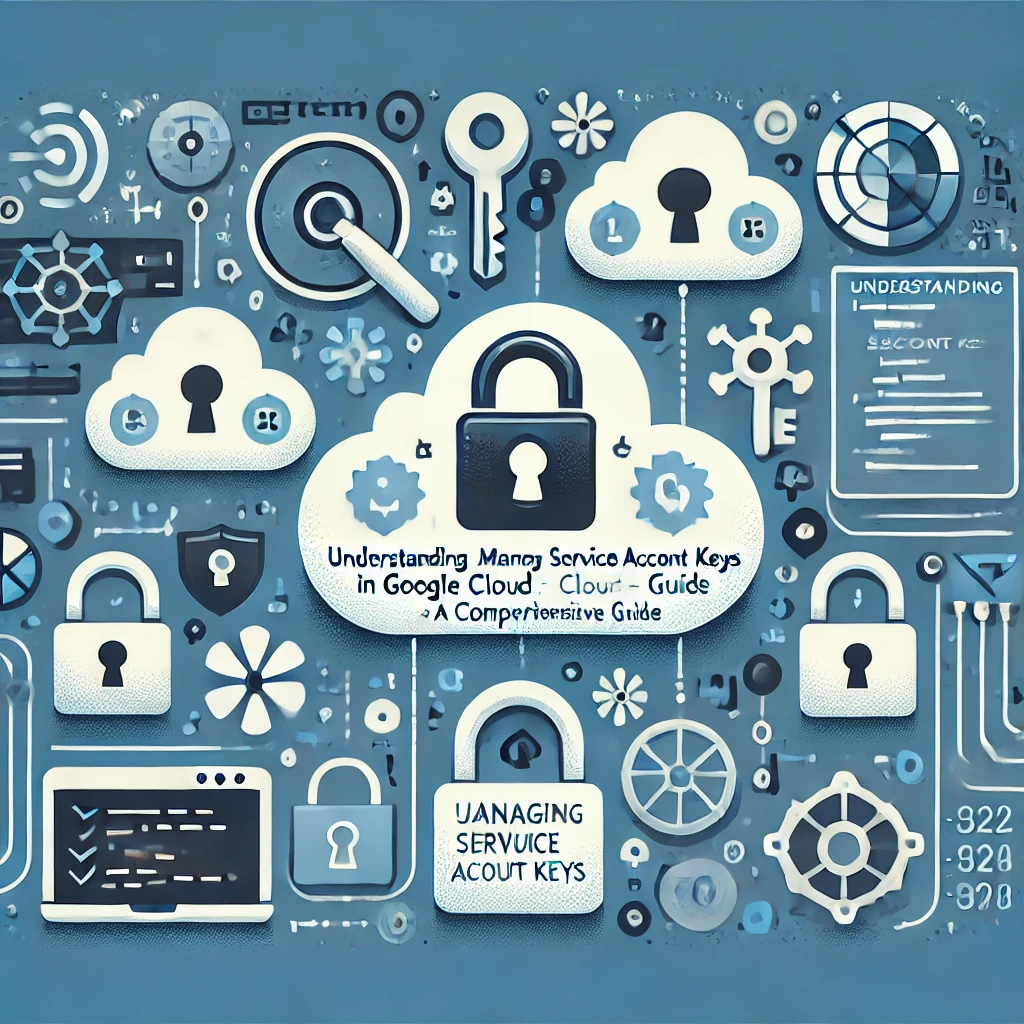Understanding and Managing Service Account Keys in Google Cloud: A Comprehensive Guide
 Tanishka Marrott
Tanishka Marrott
Introduction
In our journey as cloud engineers, we often encounter the intricate web of permissions and authentication mechanisms that keep our applications secure and functional. One such critical aspect is the use of Service Account Keys in Google Cloud Platform (GCP). Let's dive deep into the why, how, and best practices surrounding service account keys, enriched with personal insights and experiences.
Why Service Accounts and Service Account Keys?
Purpose of Service Accounts
Service accounts in GCP are essential for applications running on VMs or clusters that need to interact with Google Cloud services. They enable these applications to assume the permissions assigned to the service account, ensuring seamless functionality. Essentially, they provide a secure way for applications to authenticate and interact with Google APIs.
What is a Service Account Key?
A service account key is a long-lived credential used by applications for inter-service interactions. Unlike short-lived OAuth2 tokens, which reduce exposure risk due to their transient nature, service account keys provide a more persistent method for authentication, proving the identity of an application when interacting with Google APIs.
Why Service Account Keys are Needed
Authentication: When applications need to securely authenticate with Google APIs, service account keys come into play. They offer a reliable way for the application to prove its identity.
CI/CD Pipelines: Service accounts are often used in CI/CD pipelines to authenticate and execute deployment scripts, ensuring smooth and secure automated processes.
Automated Scripts: For tasks like backups, data processing, and scheduled jobs, service accounts with the necessary permissions are crucial.
Exemplar: - GCP - CI/CD Pipeline Integration Using SA Keys
CI/CD pipelines use service account keys to authenticate with Google Cloud services, enabling the execution of deployment scripts and interaction with GCP APIs securely.
Example Process:
Configure Service Account: Assign the necessary permissions to the service account.
Generate and Download Key: Create and download the service account key securely.
Integrate with CI/CD System: Store the key securely in the CI/CD system's secret management tool.
Use Key in Pipelines: The CI/CD pipeline uses the key to authenticate and execute scripts during deployment.
stages:
- deploy
deploy:
stage: deploy
script:
- gcloud auth activate-service-account --key-file $GOOGLE_APPLICATION_CREDENTIALS
- gcloud app deploy app.yaml
Security Best Practices
Automated Key Rotation
Cloud Scheduler and Cloud Functions: Schedule key rotation at regular intervals using Cloud Functions with necessary permissions.
Configuration Management Tools: Use tools like Ansible and Terraform to automate key management.
from googleapiclient import discovery
from oauth2client.service_account import ServiceAccountCredentials
def rotate_key(service_account_email):
# Set the scope
scope = ['https://www.googleapis.com/auth/iam']
credentials = ServiceAccountCredentials.from_json_keyfile_name('path/to/keyfile.json', scope)
# Build the IAM service object
service = discovery.build('iam', 'v1', credentials=credentials)
# Create new key
request = service.projects().serviceAccounts().keys().create(
name='projects/-/serviceAccounts/' + service_account_email, body={}
)
response = request.execute()
print('New key created:', response['name'])
rotate_key('your-service-account-email@your-project-id.iam.gserviceaccount.com')
Using Secrets Management Services
Store service account keys in secure secrets management services like Google Cloud Secret Manager to avoid direct exposure.
Monitoring and Detection
Implement logging and monitoring to detect unusual activities and potential misuse of service account keys. While logs might not differentiate between legitimate and illegitimate use of service accounts, comprehensive monitoring can help identify anomalies.
Why Service Account Key Restrictions are Crucial
Preventing Unauthorized Access: Restricting service account key creation and upload can prevent unauthorized access and potential security breaches.
Reducing Risk of Exposure: By disabling service account key creation and enforcing strict policies, we minimize the risk of key exposure, thus enhancing overall security.
from googleapiclient import discovery
from oauth2client.service_account import ServiceAccountCredentials
def disable_key_creation(project_id):
# Set the scope
scope = ['https://www.googleapis.com/auth/cloud-platform']
credentials = ServiceAccountCredentials.from_json_keyfile_name('path/to/keyfile.json', scope)
# Build the Resource Manager service object
service = discovery.build('cloudresourcemanager', 'v1', credentials=credentials)
# Set the policy
policy = {
"bindings": [
{
"role": "roles/iam.securityAdmin",
"members": [
"serviceAccount:your-service-account@your-project-id.iam.gserviceaccount.com"
]
}
]
}
request = service.projects().setIamPolicy(
resource=project_id, body={"policy": policy}
)
response = request.execute()
print('Policy set:', response)
disable_key_creation('your-project-id')
Key Exposure and Mitigation
How Keys Can Be Exposed: Keys can be exposed through accidental uploads to public repositories, insecure storage, or improper sharing.
Mitigating Risks: Implementing strict policies, regular audits, and automated key rotation can significantly reduce the risks.
Conclusion
Understanding and managing service account keys is critical for maintaining security and operational efficiency in GCP. By following best practices and leveraging automated mechanisms, we can ensure our applications remain secure and functional, mitigating the risks associated with key exposure. Let's continue to explore and implement these strategies to keep our cloud environments secure and resilient.
Feel free to share your thoughts, experiences, or questions about managing service account keys in the comments. Let's learn and grow together in this ever-evolving field of cloud computing!
Happy coding and securing! 🌐🔒
Skills Utilized
Cloud Services: GCP (Service Accounts, IAM, Secret Manager)
Security Practices: Key Rotation, Policy Enforcement
Automation Tools: Cloud Scheduler, Cloud Functions, Ansible, Terraform
Let's connect and discuss more about cloud security and best practices. Your insights and experiences are invaluable!
Subscribe to my newsletter
Read articles from Tanishka Marrott directly inside your inbox. Subscribe to the newsletter, and don't miss out.
Written by

Tanishka Marrott
Tanishka Marrott
I'm a results-oriented cloud architect passionate about designing resilient cloud solutions. I specialize in building scalable architectures that meet business needs and are agile. With a strong focus on scalability, performance, and security, I ensure solutions are adaptable. My DevSecOps foundation allows me to embed security into CI/CD pipelines, optimizing deployments for security and efficiency. At Quantiphi, I led security initiatives, boosting compliance from 65% to 90%. Expertise in data engineering, system design, serverless solutions, and real-time data analytics drives my enthusiasm for transforming ideas into impactful solutions. I'm dedicated to refining cloud infrastructures and continuously improving designs. If our goals align, feel free to message me. I'd be happy to connect!